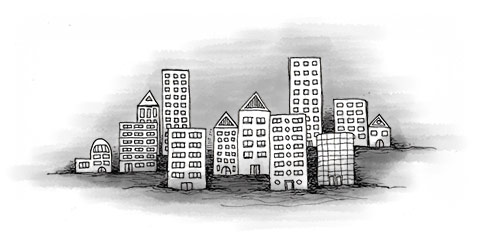Each month, you’re required to pay an estimated amount towards the maintenance and repair of common areas (e.g. hallways, lobby, grounds, lifts), the cost of the concierge or building manager, water supplies and sewerage and other shared utilities, including heating and hot water if these are provided on a communal basis. At the end of the year, the actual cost of these services is assessed and each tenant is charged a share, based on the size of his apartment or other criteria stipulated in the lease. If you’ve paid too much, you’ll receive a credit on your following month’s rent payment; if you’ve underpaid, you’ll be asked to make up the difference. Your estimated monthly payment is then adjusted for the following year.
Common charges typically add 10 to 20 per cent to the base rent, depending on what is covered and how the allocation is determined. When you move out of your apartment, it’s customary for the landlord to retain your damage deposit until the last of the common charges have been settled, which can take a year or more. Note that in Belgium there are no tenants’ or owners’ associations to which you can belong in order to have a say in how much you’re charged.
House Rules
Most apartment blocks have house rules, some of which may be formulated by the local commune and be enforceable by law. You should receive a copy of the house rules on moving into an apartment or when you sign a rental or sales contract, but it’s wise to review them before you agree to rent or buy a home, as they can affect your use and enjoyment of the common facilities (sometimes they will even restrict the colour of the curtains you can hang in your windows!). If you don’t understand the rules, have them translated; ignorance is no excuse for breaking house rules.
Common house rules include restrictions on the use of hallways for storing bicycles or children’s toys; noise (particularly late at night), including the flushing of toilets or running of showers after 10pm; use of lifts by unaccompanied children or for moving furniture or other large items; use of the balconies or visible terraces for hanging laundry or mounting satellite dishes; and parking by residents and guests. Rules may also cover the rotation of cleaning duties for hallways or common areas where there’s no concierge or maintenance staff, responsibility for locking communal entrances at night and the collection of rubbish.
Inventory
One of the most important tasks on moving into a new apartment or home is to complete an inventory and condition report (état des lieux/staat van het huis). This includes the state of the fixtures and fittings (if there are any), the cleanliness and condition of the decoration and any items missing or in need of repair. The procedure varies, but in general all problems and damages are listed on a form which is signed by both the tenant and the landlord, or the vendor and the buyer in the case of a sale. Most leases require the tenant to restore the property to ‘move-in’ condition, and it’s the inventory report which establishes what that condition was. Any damages that aren’t noted on the inventory list when you move in will be charged to you when you move out, so you should make sure that you check a property thoroughly and that the inventory list is complete before you sign it.
Once you’ve moved in, it can be difficult (or impossible) to persuade the owner to repair anything, as you’ll be responsible for all interior maintenance and decoration. If you’re buying a house or apartment, the inventory should itemise any unfinished work or repairs that the vendor has agreed to remedy. If possible, this list, along with deadlines for completing the work, should be submitted to the notary prior to the transfer of the property so that it becomes part of the sales contract.
In Belgium, an inventory is normally carried out by a surveyor (géomètre/landmeter), who is usually paid by the property owner. However, it’s wise to hire your own surveyor if you have any reason to doubt the competence or objectivity of the person your landlord or vendor has engaged. The surveyor is supposed to examine the empty property in minute detail, noting all imperfections and damage, from heel marks or scratches on the floor to broken or malfunctioning windows, doors or plumbing. You can (and should) be present during the inventory to make sure that everything is properly noted.
If you’re purchasing any fittings or appliances from the previous tenants, be sure to obtain a receipt so that the landlord can’t claim them as part of his property, either during the inventory or when you move out. If you’ve bought fittings or appliances as part of a sale, make sure that they’re included in the inventory and correspond with what you thought you were buying.
This article is an extract from Living and Working in in Holland, Belgium & Luxembourg from Survival Books.


